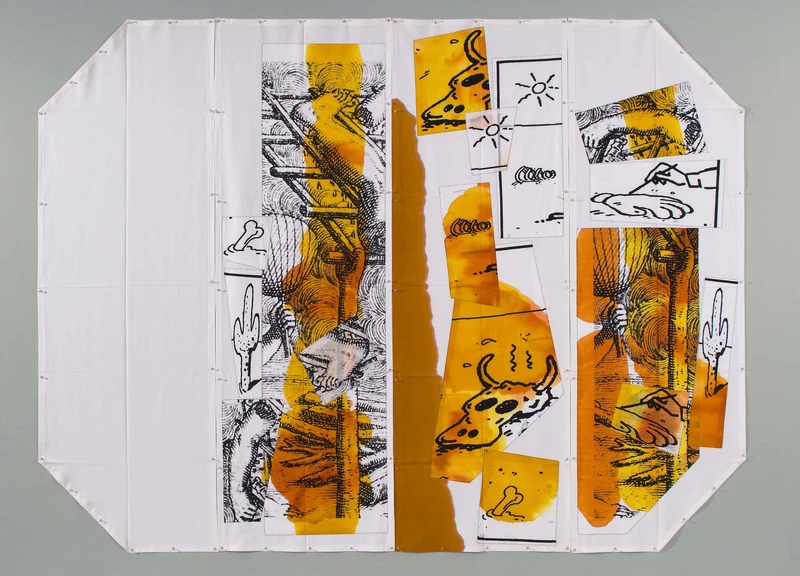Eugenio Dittborn: Airmail paintings
17 Sep-12 Dec 2021


The first exhibition of Eugenio Dittborn’s work in the UK since 1993, includes historical and new works, sent to the gallery using couriers, honouring his renowned use of airmail. Since the 1980s, Dittborn’s large-scale works have been folded and dispatched in airmail envelopes to galleries worldwide, surmounting restrictions of movement created by national borders, oppressive governments, and geographical distance.
Crossing impermeable national borders and traversing international networks of mail distribution, his works powerfully transcend the spatial barriers between the Global South and the western world, tracing the lines of colonial histories of subjugation and exploitation, and the cultural hegemony of western art history. Folded in the fragility of an envelope, the process of which provides the works with their distinctive 16-part grid, the moment of their opening and display produces large-scale effect from the slightest of means – a guerrilla claim for space by an artist knowingly outside of the ‘centre’, and not without humour.
Works have been selected to span different media employed across Dittborn’s oeuvre, as well as film works that are less often exhibited. Originally using brown Kraft paper, Dittborn later moved to fabric, across which surfaces he reproduces found images, texts and drawings. Gleaned from newspapers, magazines, drawing manuals and books, each is selected, as Dittborn states, because they “amazed, disturbed, frightened, and sometimes tickled me.” Unfolded now across the decades, each acts as a document of different moments in both Dittborn’s personal history, and Chilean history – coming into direct and provocative contact across the pictorial plane.
Included are works from the series Historia del rostro (History of the Human Face) (ongoing), which bear faces drawn by the artists’ daughter in stark juxtaposition with mug shots and portraits of indigenous Chileans. Confronting the viewer with a direct gaze, these photographs are vivid moments in which the power of the state upon a subject is fixed and inscribed, and uncomfortable examples of the ethnographic gaze, through which indigenous populations were ‘possessed’ by their colonizers. Recent political upheavals in Chile have rendered the exhibition an example of the cyclical nature of geopolitical instability in the face of social injustice and inequality.